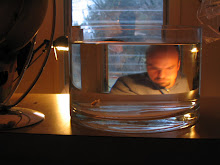Monday, July 23, 2012
Beyond the known
Increasingly, Cleo, you're raising questions that I can't answer. Not the iconic question, yet, about the sky being blue, but a wonderful curiosity - sometimes explicit, sometimes unspoken - nevertheless in other directions. What is that wrinkled fruit that drops from the tree next door onto our steps? Might it be useful to think of bacteria as purple seeds? How does one remedy a slight burn occasioned during the making of the morning's pancakes? And, over the weekend, what are the full lyrics to 'Here Comes the Bride'?
Cleo and I were attending an imaginary wedding in our bubble-wrap dresses when I decided to teach her the traditional entry theme. But, as often happens, the seemingly simple soon turns out to be complicated, and the limits of our adult knowledge are quickly shown to be embarrassingly narrow: we know just enough, it seems, and rarely more. Were you aware, for instance, that the traditional wedding march was composed by Wagner, and is thus rarely played at Jewish weddings, where the composer's rabid anti-Semitism is hardly desired? (Indeed, given that it originally accompanied the motion of a newly married couple into the nuptial chamber, it's sometimes seen as inappropriate for use in any holy setting). Or do you happen to know the line that comes after all dressed in white?
I did not. And neither, it turns out, do many others: it's been parodied many times, but the original is hardly a standard, in full. But, Cleo, should you be reading this years from now, know that your daddy sometimes had the time, the good sense, and the modesty to try to learn from what you taught him. So:
Here comes the bride,
all dressed in white
Sweetly, serenely, in the soft glowing light
Lovely to see, marching to thee
Sweet love united for eternity.
Subscribe to:
Post Comments (Atom)





No comments:
Post a Comment